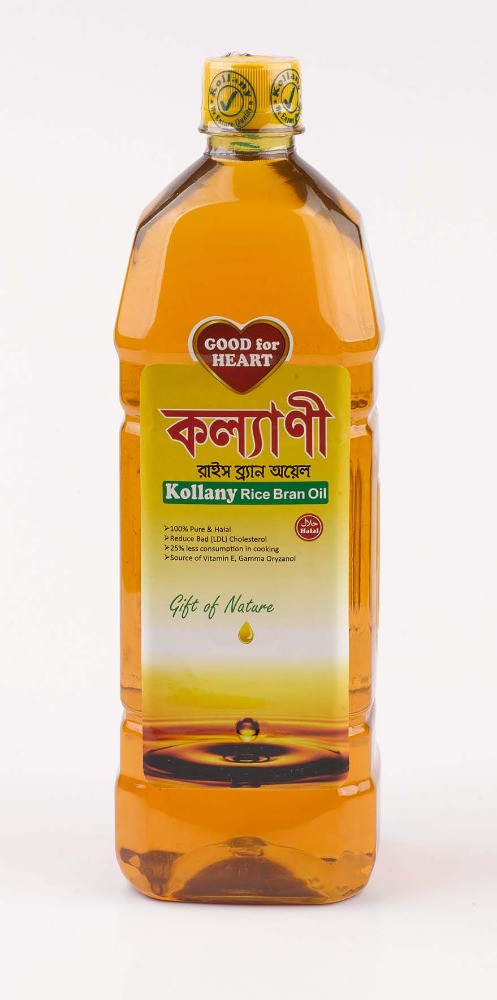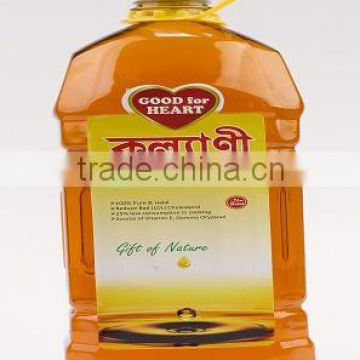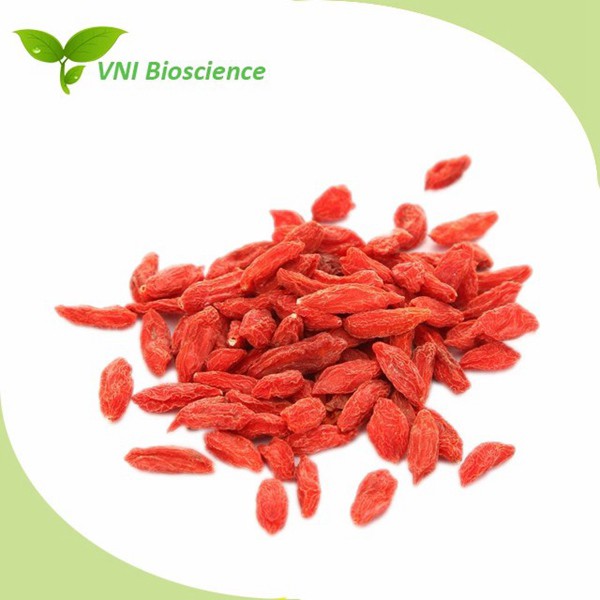Edible rice bran oil
Product description
Product Description
The American Heart Association (AHA) recommends the average intake of fat should be 30% of your total caloric intake. This fat intake should consist of balanced fat, which provides nutrients that are essential to sustain life. A Balanced fat intake should contain approximately 30% saturated fat, 33% poly-unsaturated fat, (containing Essential Fatty Acids) and 37% mono-unsaturated fat.
Comparison of smoke point and balance of fats in some commonly used oils:
| OIL TYPE | SMOKE POINT | MONO-UNSATURATED FAT | POLY-UNSATURATED FAT | SATURATED FAT |
| Rice Bran Oil | 490º | 47% | 33% | 20% |
| Olive | 360º | 77% | 9% | 14% |
| Canola | 450º | 61% | 33% | 7% |
| Peanut | 460º | 48% | 34% | 18% |
| Soybean | 440º | 24% | 61% | 15% |
| Grape seed | 485º | 14% | 77% | 9% |
Olive Oil:
High mono fat, able to lower cholesterol but deficient in poly fat, which contains Essential Fatty Acids (EFA). EFA’s are truly essential to life as every metabolic process in your body depends on them. A low smoke point makes it a poor choice for frying, and its heavy taste makes it undesirable in many baked goods. Traditionally a good salad oil.
Canola Oil:
High mono fat with cholesterol lowering ability but there are concerns about the origin. “Canola oil” is a term coined by Canada to change the name of “rapeseed oil”. The rapeseed plant contains erucic acid making it toxic and is used as an industrial lubricant. It has been genetically modified and hybrid to produce a low erucic acid version. Commonly hydrogenated, it is extensively used in the food industry because of its low price. The hybrid plant would be the best choice.
Peanut Oil:
A good balanced oil. This oil has good cholesterol lowering ability and a high smoke point, making it a good frying oil. It imparts a slightly earthy, nutty flavor. It lacks the anti-oxidants and micronutrients of Rice Bran Oil. A small percentage of people are allergic to nut oils.
Soybean Oil:
This oil is a high poly fat. As recommended by the AHA your poly fat intake should be around 33% of your total fat intake. A high poly percentage is, an aid to tumors and cancer and should be carefully watched. Up to 80% of the oil consumed in the U.S.A. today comes from soybeans. Soybean oil is commonly hydrogenated and used in many processed foods.
Grape Seed Oil:
A good frying and salad oil, but again high in poly fat. It does lower cholesterol because of the high unsaturated fat content but is way over the recommended 33% poly-unsaturated fat.
Comparison of natural antioxidants in edible oils
| OIL TYPE | VITAMIN E TOCOPHEROL (ppm*) | VITAMIN E TOCOTRIENOL (ppm*) | ORYZANOL (ppm*) | TOTAL NATURAL ANTIOXIDANTS (ppm*) |
| Rice Bran Oil | 81 | 336 | 2,000 | 2,417 |
| Olive | 51 | 0 | 0 | 51 |
| Canola | 650 | 0 | 0 | 650 |
| Sunflower Oil | 487 | 0 | 0 | 487 |
| Soybean Oil | 1,000 | 0 | 0 | 1,000 |
| Palm Oil | 256 | 149 | 0 | 405 |
* ppm. stands for parts per million

| Packaging Details |
| PET Bottled (1 ltr/ 2 ltr/ 3ltr/ 5 ltr) |
| HDPE Bottled (only 5 ltr) |
| Flexitank (in case of loose bulk quantity) |
| Drum (in case of loose bulk quantity) |
| In any other container buyer feels okay |
| 20' Container is preferred |
| Pallet can be arranged as per requirement |
| Delivery Detail |
| Within three weeks after opening L/C or T/T payment |
In contrast to our competitors, most appreciate the quality of our products. After a same crop of vegetables and fruits we are also involved in their distribution so you do not care about until the delivery to the store. In addition, we do not stop only on what we already have , but also experimenting with new varieties even hard available in our climate.
After our fruits and vegetables you can expect only the same advantages. Our products are genetically enriched with extra doses of vitamins so that your body will always have supplied the correct dose of vitamins. You can expect also that every day we get better at what we do.
Recommended products




